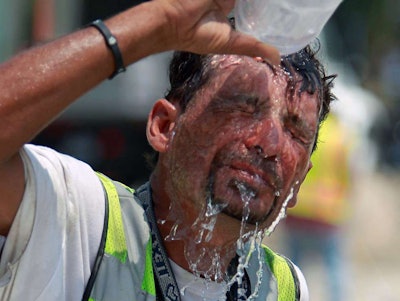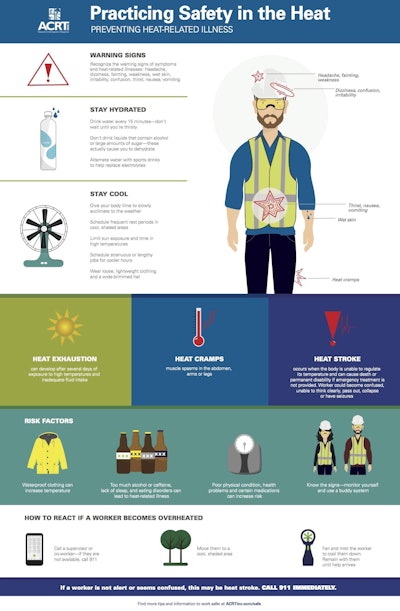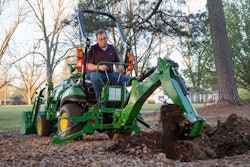
June through August is the hottest part of the year, and unfortunately, as landscapers you find yourselves smack dab in the middle of the heat almost hourly.
For those hiring part-time teenage workers for the summer, it is crucial that you take the time to not only educate them on safe landscaping practices, but that you also educate them on staying hydrated and safe from the sun during the work day.
In 2017, an 18-year-old high school student was working with a landscape company in Ohio and passed away on his first day of work due to what is assumed to be overheating.
Tuscarawas County Sheriff Orvis Campbell reported that the teen’s temperature was extremely hot at the time the paramedics arrived on the scene.
What may seem obvious to you, an experienced worker, may not be common knowledge to someone younger. Even if you find it trite and unnecessary to talk about sunscreen and drinking water, it could potentially save the lives of your younger employees.
Safeguarding against sunburn and skin cancer
If there’s one safety precaution that occasionally slips through the cracks at even the best of landscape companies, it’s probably sunburn. Landscaping is seasonal work and the busiest time is when the days are longest.
Chances are, managers will take care to ensure their crews have access to plenty of water and may even insist that short breaks be taken regularly to guard against heat exhaustion. Sun exposure, however, just seems to come with the territory.
According to research done by the National Cancer Society and the Occupational Safety and Health Administration (OSHA), there is one safety policy regarding sun exposure that typically goes out the window: appropriate clothing.
It will not be the most popular option for those who know they are about to head out into the blazing heat, but requiring your employees to wear long-sleeve shirts and long pants will help keep them safe from burning and potential skin cancer.
Another must for those perpetually working outdoors is the application of sunscreen, preferably brands that are water-resistant with an SPF of at least 15. Be sure to stress the importance of reapplying every two hours if workers are perspiring heavily.
Using sunglasses while on the job can help protect eyes from the harsh UV rays, and choosing a broad-brimmed hat instead of a baseball cap will also protect ears from sunburn. Ears are a common site of skin cancer, and they are particularly susceptible to sunburn.
According to the National Council on Skin Cancer Prevention, in 2016 it was estimated that 76,380 new cases of melanoma would be diagnosed that year in the United States. On average, if a person has had more than five sunburns, the risk of becoming one of those cases can double.
Lastly, the most difficult recommendation for avoiding sunburn is to limit the amount of time in the sun your employees spend. With the summer daylight lasting longer, the temptation is to get out earlier and stay later in order to bring in more jobs, but don’t sacrifice the health and well-being of your employees just to make two or three extra stops.
Playing it safe
When working in the hottest parts of the day, consider rotating out workers from sunny to shaded areas of the landscape to ensure they are staying hydrated and cooled off. Create mandatory water breaks and cool-down time as well to keep employees safe. Keep an ample supply of water on all trucks, and encourage employees to take breaks when they feel the heat is taking its toll.
Another option could be starting the workday earlier to avoid the hottest parts of the day. If your crew is available and your customers are on board, talk about starting the job shortly after 6 a.m. This could give you the chance to get a job done early, break for some of the hotter hours and jump back in once the heat has subsided slightly.
Educate your staff and project managers on the signs of dehydration, heat exhaustion and heat stroke. Symptoms may vary from person to person, but a few warning signs of a heat stroke can include nausea, dizziness, complaints of sudden and severe fatigue and lightheadedness. If a co-worker is suffering from a heat stroke, contact 911 immediately and find some method to cool him/her down.
If available, put the person in a cool tub of water, spray them gently with a garden hose, sponge them down with cool water, cover them with cool, damp sheets or place ice packs or cool, wet towels on the neck, armpits and groin. If he/she is able to drink, keep him/her hydrated with cool water. If the person is unconscious, being CPR until medical professionals can arrive.
 Graphic: ACRT, Inc.
Graphic: ACRT, Inc.









